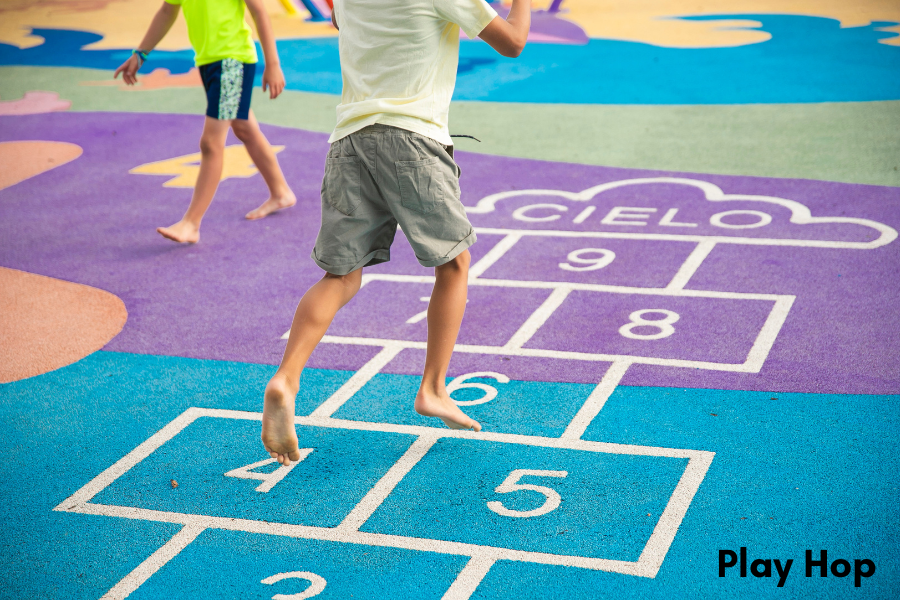Play Hop: A Game for Fun, Fitness, and More
An Exciting and Healthy Tradition: Play Hop
Play Hop isn’t just a game from childhood—it’s a lively activity that blends entertainment, creativity, and exercise. Whether you’re reminiscing about your own experiences or introducing it to a new generation, the fun and simplicity of Play Hop make it a timeless choice for people of all ages. In this article, we will delve into the history of hop games, explain how they are played, highlight their benefits, and explore how you can adapt them for modern enjoyment.
The Historical Origins of Play Hop
The origins of Play Hop can be traced back to ancient cultures. Evidence suggests that variations of hopscotch were enjoyed by civilizations like the Romans and Chinese, where they were used to build stamina and improve coordination. These ancient versions, often featuring grids drawn on the ground, eventually transformed into the popular games we recognize today.
How to Play Play Hop: Simple and Fun Rules
One of the reasons Play Hop is so widely loved is its simplicity. With minimal equipment and easy-to-follow rules, it’s a game anyone can enjoy. Here’s how you can play:
- Prepare the Grid: Draw a sequence of numbered squares on the ground using chalk or tape.
- Toss the Marker: Throw a small object such as a stone or beanbag onto one of the squares.
- Hop Through the Grid: Hop across the squares, carefully skipping the one where your marker landed, and return to the starting point without losing your balance.
- Retrieve the Marker: Pick up your marker on your way back.
- Keep Going: Continue to advance through the squares, tossing the marker to each new square as you progress.
The Many Benefits of Playing Play Hop
Play Hop offers much more than just entertainment—it also provides physical and mental health benefits:
- Physical Fitness: The act of hopping strengthens the leg muscles, improves coordination, and boosts balance.
- Mental Development: The game helps with focus, counting, and memory.
- Social Skills: Play Hop encourages teamwork and friendly competition, particularly when enjoyed in a group.
Fun Variations of Play Hop
Though the classic version of hopscotch is the most well-known, there are numerous variations of hop games around the world:
- Creative Hopscotch: Add interesting shapes like stars or circles to make the game more challenging.
- Team Relay: A version where players take turns completing the grid, turning it into a team challenge.
- Themed Games: Add an educational twist by incorporating colors, letters, or patterns.
Perfect for Outdoors
Play Hop is ideal for outdoor fun, providing a great way to get kids away from screens and outdoors. All you need is a flat surface and some chalk to turn any yard or playground into a lively spot for play.
Indoor Adaptations for Play Hop
Even when the weather is less than ideal, Play Hop can still be enjoyed indoors. Get creative by using masking tape to mark a grid on the floor or soft mats to ensure safety while hopping.
Global Variations of Play Hop
Across the world, different cultures have put their own unique spin on hop games:
- Peevers in Scotland
- Escargot in France
- Kith Kith in India
These games maintain the joy of hopping while incorporating local traditions and styles.
Modern Updates to Play Hop
With today’s technological advances, Play Hop is even more exciting. Interactive hopscotch mats that light up or use sensors are now available, making the game more engaging for tech-savvy kids.
DIY: Create Your Own Play Hop Setup
Making your own version of Play Hop is simple and fun. Here’s how you can do it:
- Grab some chalk or tape.
- Design a creative grid with numbers, shapes, or fun themes.
- Invite friends and family to join the fun!
Key Facts about Play Hop
- Origins in Ancient Civilizations:
- Play Hop, in the form of hopscotch, dates back to ancient Rome and China. It was originally used as a physical exercise to build endurance and coordination.
- Minimal Equipment:
- One of the reasons Play Hop is so widely accessible is that it requires very little equipment. All you need is a chalk or tape to draw the grid and a small object like a stone, coin, or beanbag as a marker.
- Physical Benefits:
- Play Hop is great for strengthening leg muscles, improving coordination, and enhancing balance, as the game involves hopping and jumping.
- Cognitive Benefits:
- The game helps develop memory, focus, and counting skills. As players mentally track their movements and numbers, it boosts cognitive development.
- Social Interaction:
- Play Hop fosters teamwork, especially in group settings, and encourages friendly competition, making it a popular choice for social gatherings.
- Global Appeal:
- Different cultures have their own variations of Play Hop. For example, Scotland has “Peevers,” France has “Escargot,” and India has “Kith Kith.” These regional versions offer slight rule variations but maintain the core joy of hopping.
- Adaptable for All Ages:
- Play Hop is suitable for all ages, from children to adults. It can be played at home, in the park, or even indoors, with adaptations to suit various age groups.
Conclusion: Why Play Hop Should Be Part of Your Routine
Play Hop is a classic game that continues to bring joy and health benefits across generations. Its simplicity, combined with its ability to foster connections and improve fitness, makes it a timeless activity worth sharing with others. So, find a flat surface, grab some chalk, and start hopping today!
FAQs About Play Hop
1. What is Play Hop?
Play Hop is a classic, simple game where players hop through a series of numbered squares drawn on the ground. The game typically involves tossing a marker onto one of the squares, hopping through the grid while skipping the square with the marker, and retrieving it on the way back.
2. What do you need to play Play Hop?
To play Play Hop, you need minimal equipment:
- A flat surface to draw a grid (chalk for outdoors or tape for indoors).
- A small object like a stone, coin, or beanbag to serve as the marker.
- Players who are ready for fun and exercise!
3. Can Play Hop be played indoors?
Yes, Play Hop can easily be adapted for indoor play. You can use masking tape to create the grid on the floor, and soft mats or carpet can be used for safety. It’s a great option for bad weather days.
4. What are the benefits of playing Play Hop?
The benefits of Play Hop include:
- Physical Fitness: It improves leg strength, coordination, and balance.
- Cognitive Skills: The game boosts memory, focus, and counting abilities.
- Social Interaction: It promotes teamwork and competition in group play.
5. Are there variations of Play Hop around the world?
Yes, many cultures have their own versions of Play Hop. For example, “Peevers” in Scotland, “Escargot” in France, and “Kith Kith” in India each have unique rules but retain the fun and challenge of hopping through a grid.
6. Can Play Hop be made more challenging?
Absolutely! You can make Play Hop more challenging by:
- Adding shapes or patterns to the grid.
- Increasing the number of squares or making them more intricate.
- Introducing rules that require additional skills, like hopping on one foot or using both feet.
7. Is Play Hop suitable for all ages?
Yes, Play Hop is a versatile game that can be played by children and adults alike. Younger kids can enjoy the simple rules, while older players can add more complexity to the game.
8. How can Play Hop be adapted for modern kids?
Modern variations of Play Hop include interactive mats with lights or sensors, and digital versions of the game, where players can track their progress on a screen. These adaptations blend tradition with technology, making the game even more exciting for tech-savvy kids.
Stay updated with the latest news and trends here at My Reading Manga!




